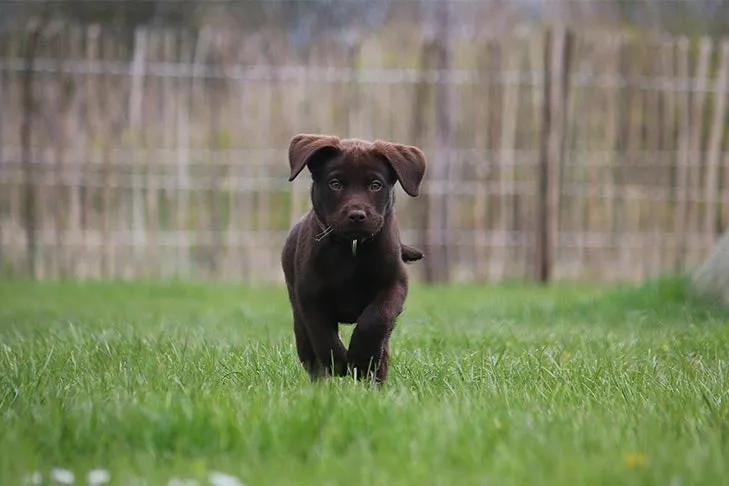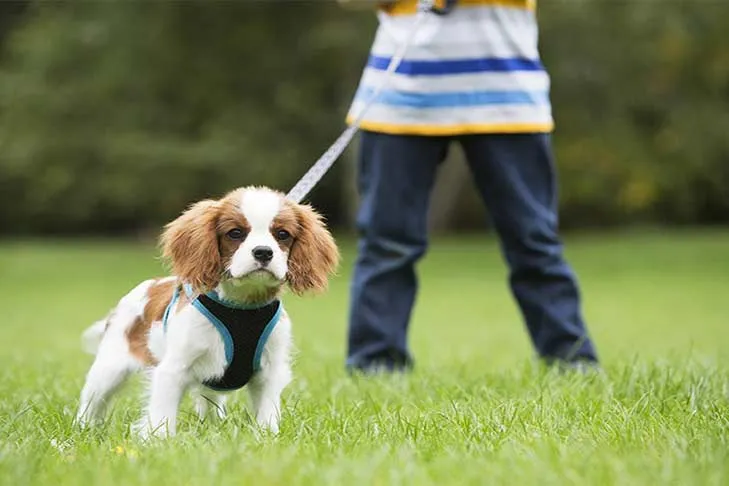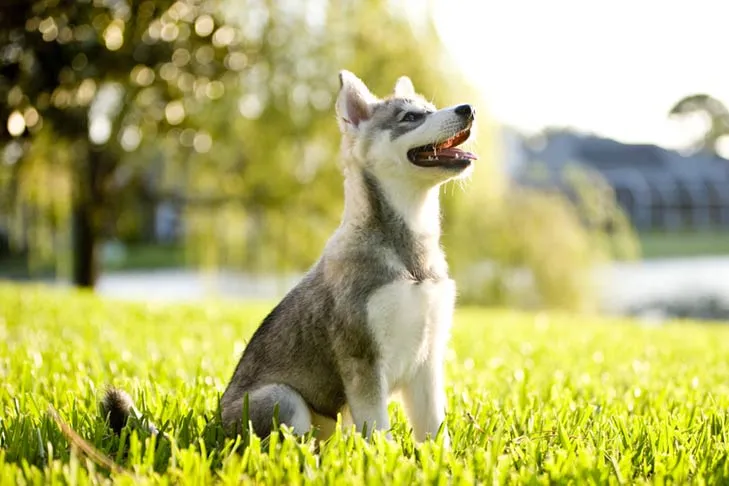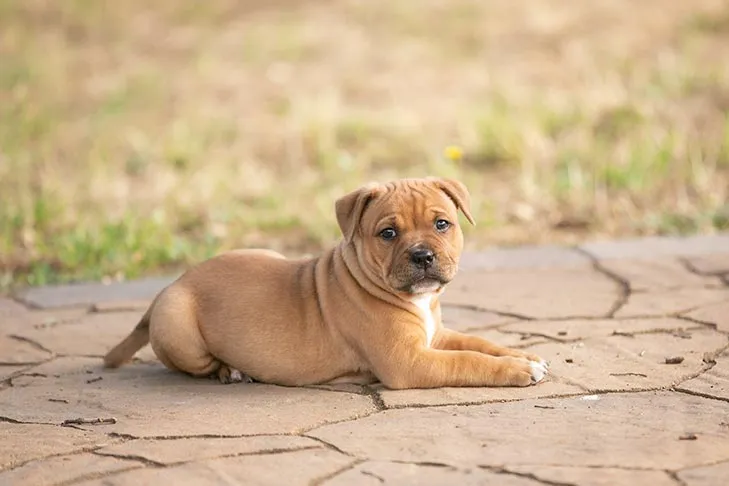Bringing a new puppy home is an exciting time, filled with cuddles, playtime, and the beginning of a lifelong bond. While adorable, puppies also require guidance to grow into well-behaved adult dogs. This is where training the Best Commands To Teach Puppy becomes essential. Laying a solid foundation through early and consistent training is key to a harmonious relationship and ensures your puppy feels secure, understood, and confident in navigating their world.
Effective puppy training isn’t just about teaching tricks; it’s about clear communication, building trust, and setting boundaries that keep your furry friend safe. The fundamental principles revolve around positive reinforcement, short and engaging sessions, and patience. Instead of focusing on punishment or correction, we empower puppies to learn by rewarding the behaviors we want to see. This approach makes learning enjoyable for both of you and fosters a strong, positive connection. Through these initial lessons, your puppy will learn to respond reliably, understand basic expectations, and be better prepared for any future training endeavors.
The Foundation of Effective Puppy Training
Starting your puppy’s training journey on the right foot is paramount. Just like humans, puppies thrive when they understand what is expected of them, which in turn builds their confidence and a sense of security. The bedrock of successful puppy training is always positive reinforcement.
Positive Reinforcement Explained
Positive reinforcement is a powerful training method where you reward a desired behavior immediately after it occurs. This reward increases the likelihood that your puppy will repeat the behavior. The goal isn’t to bribe your puppy, but to teach them that performing certain actions leads to positive outcomes. By making learning a rewarding experience, you encourage their natural willingness to cooperate and learn. Avoid punishment, such as yelling or leash corrections, as it can confuse your puppy, create fear, and damage your bond. Remember, your puppy isn’t being “stubborn”; they simply don’t understand yet. Patience and clear communication are your best tools.
The Role of Rewards
Reinforcement can be anything your puppy values. For many, small, high-value food treats are ideal for training. Think freeze-dried liver, small pieces of cheese, or even their regular kibble if they find it exciting. Verbal praise (“Good dog!”), gentle petting, or a quick game with a favorite toy can also be effective rewards. To make praise a strong reinforcer, pair it with food initially: say “Good dog!” enthusiastically as you give a treat. Over time, your puppy will associate the praise with positive feelings, making it a reward in itself. For more fundamental skills, explore these basic things to teach a puppy early on.
Keeping Training Sessions Short and Sweet
Puppies can begin very simple training as soon as they come home, typically around 8 weeks old. The golden rule is to keep training sessions brief—just five to ten minutes at a time. Puppies have short attention spans, and longer sessions can lead to boredom or frustration, which hinders learning. Always end each session on a positive note. If your puppy is struggling with a new concept, switch to a command they already know, let them succeed, and reward them lavishly before concluding. This ensures they finish feeling successful and eager for the next session.
 Labrador puppy running on grass
Labrador puppy running on grass
A playful Labrador puppy dashes through a grassy field next to a fence, showcasing energy and readiness for training.
Essential Commands to Master First
These five foundational commands, often called the “Basic 5,” are among the best commands to teach puppy to ensure they grow into well-mannered companions. Mastering these will set your puppy up for success in all future training.
“Come” – The Lifesaving Recall
Teaching your puppy to “Come” when called is arguably one of the most crucial commands, potentially saving their life in an emergency. Begin training in a quiet, distraction-free environment, preferably indoors.
- Introduce the Cue: Sit with your puppy and say their name, followed by “Come.” Immediately give them a high-value treat. Repeat this several times. Your puppy doesn’t need to move yet; they’re just learning to associate the word with a positive outcome.
- Encourage Engagement: Drop a treat on the floor near you. As soon as your puppy finishes it, say their name again. When they look up at you, give another treat. This teaches them to pay attention to their name.
- Add Distance: Gradually increase the distance you toss the treat. Call their name, and as they turn to face you, give them a treat. If they don’t respond, move closer and repeat an easier step. Avoid repeating their name if they’re not responding, as this can teach them to ignore it.
- Introduce Movement and Fun: Toss a treat a short distance away. As they go to get it, take a few quick steps backward while calling their name enthusiastically. Puppies love to chase, so they’ll likely follow. When they reach you, praise them lavishly, give treats, or engage in a quick game with a tug toy. Make coming to you the most fun thing ever!
- Practice in Various Settings: Slowly introduce distractions and new locations (always a safe, enclosed area initially, perhaps with a long leash for safety). Remember, coming to you should always be a positive experience. Avoid grabbing your puppy when they reach you; instead, kneel down, offer treats, and gently reach for their collar if needed.
“Loose-Leash Walking” – Enjoyable Strolls
Walking politely on a leash makes walks enjoyable for both you and your puppy. The goal is for your puppy to walk beside you without pulling, with the leash remaining slack.
- Leash Comfort: First, ensure your puppy is comfortable wearing a collar and leash. Put the leash on for short periods, giving treats while they wear it, so they associate it with positive experiences.
- Initial Position: Stand next to your puppy with a loose leash. Reward them with several treats in a row for simply standing or sitting calmly by your leg.
- One Step at a Time: Take one step forward. As your puppy moves to catch up, reward them immediately at the level of your knee or hip. Continue taking steps, rewarding them for staying in position.
- Redirection for Pulling: If your puppy runs ahead or pulls, calmly change direction. Call their name to encourage them to follow, and reward them when they catch up and are back by your side. This teaches them that pulling doesn’t get them where they want to go, but staying close does.
- Gradual Reduction of Treats: Slowly increase the number of steps between treats. Eventually, your puppy will walk happily at your side. Allow your puppy plenty of time to explore and sniff on walks. When it’s time to move on, use a happy cue like “Let’s go!” and reward them for returning to position. Many of these skills are also applicable as basic commands for german shepherd puppies, or other larger breeds where leash manners are particularly important.
 Cavalier King Charles Spaniel puppy walking on a leash
Cavalier King Charles Spaniel puppy walking on a leash
A small Cavalier King Charles Spaniel puppy walks gently on a leash, demonstrating good early leash training.
“Sit” – A Fundamental Behavior
The “Sit” command is often one of the easiest and most versatile commands to teach. It can be used for greetings, waiting for food, or simply asking for a moment of calm. There are two primary methods:
- Capturing: This method involves rewarding your puppy when they naturally offer the behavior.
- Stand in front of your puppy with treats.
- Wait for them to sit on their own. The moment their bottom touches the ground, say “Yes!” (or use a clicker) and immediately give a treat.
- Step backward or sideways to encourage them to stand up, then wait for them to sit again. Reward.
- After a few repetitions, as they start to lower into a sit, you can begin saying “Sit” just before their bottom touches the ground. They will quickly associate the word with the action.
- Luring: This method uses a treat to guide your puppy into position.
- Hold a treat in front of your puppy’s nose.
- Slowly move the treat backward over their head. As their nose follows the treat up, their bottom will naturally lower to the ground.
- The moment their bottom touches the floor, say “Yes!” and give them the treat.
- Repeat a couple of times with the food lure. Then, try the motion with an empty hand, still rewarding after they sit.
- Once they understand the hand signal, start saying “Sit” right before you give the hand signal.
Never physically push your puppy into a sitting position, as this can be startling or uncomfortable. Focusing on easy commands to teach a puppy like “Sit” builds confidence.
 Alaskan Klee Kai puppy sitting attentively on grass
Alaskan Klee Kai puppy sitting attentively on grass
An alert Alaskan Klee Kai puppy sits patiently on a lush green lawn, demonstrating good focus.
“Down” – For Calmness and Control
The “Down” command is excellent for promoting calmness and control, especially when you need your puppy to settle. It can be taught similarly to “Sit.”
- Capturing:
- Wait for your puppy to lie down naturally (this might happen in a quiet, less stimulating room like a bathroom).
- The instant they lie down, mark the behavior with “Yes!” and reward with a treat.
- Encourage them to stand up (a lure might help) and then wait for them to lie down again, reinforcing each time.
- Once they are quickly lying down after standing, begin saying “Down” just as they initiate the movement.
- Luring:
- Start with your puppy in a sit or stand. Hold a treat at their nose level.
- Slowly lower the treat straight down to the floor and then slide it slightly away from them. As they follow the treat, their elbows will likely touch the floor as they lie down.
- When their elbows (or full body) touch the floor, say “Yes!” and give the treat.
- After a few repetitions, practice the hand motion with an empty hand, rewarding after they complete the “Down.”
- Once they reliably follow your hand signal, start saying “Down” as you move your hand.
As with “Sit,” never force your puppy into the “Down” position. Patience and positive reinforcement are key to teaching this important command effectively.
 Staffordshire Bull Terrier puppy lying down outdoors
Staffordshire Bull Terrier puppy lying down outdoors
A young Staffordshire Bull Terrier puppy lies calmly on the ground outdoors, showing good practice of the ‘down’ command.
“Stay” – Building Self-Control
“Stay” teaches your puppy self-control and patience, requiring them to remain in a chosen position (like “Sit” or “Down”) until you give a release cue. It’s a duration behavior that is built up gradually.
- Teach the Release Word: First, choose a consistent release word like “OK” or “Free.”
- Have your puppy in a sit or stand. Toss a treat on the floor a step or two away and say your release word as they move to get it.
- Repeat this until they anticipate the release word meaning “move your feet to get the treat.”
- Short Duration, No Distance:
- Place your puppy in a “Sit” and face them. Give them a treat.
- Pause for just one second, then give another treat for staying in the “Sit.” Immediately give your release word and toss another treat for them to get up.
- Gradually increase the time between the treats given for staying (e.g., count to 2, then 3, then 5 seconds). If your puppy gets up before the release, it means you’ve asked for too much, too soon. Go back to a shorter duration where they can succeed.
- Adding Distance: Once your puppy can stay for several seconds reliably, begin adding distance.
- Place them in a “Sit,” say “Stay,” take one small step backward, then immediately step back to your puppy, give a treat, and your release word.
- Gradually increase the number of steps you take back, always returning to your puppy to reward and release. Practice facing them, then later with your back turned, which is more realistic.
- Remember, success is built in increments. If your puppy struggles, make the exercise easier. Consistency will help your puppy learn to stay focused, a skill that can even contribute to more advanced activities like basic agility training for dogs in the future. Once these basic commands are solid, you can even start exploring basic tricks to teach dogs for added fun and mental stimulation.
Conclusion
Teaching your puppy the best commands to teach puppy is an investment in their future happiness and your peaceful coexistence. By focusing on the “Basic 5” – Come, Loose-Leash Walking, Sit, Down, and Stay – you’re equipping them with critical skills for safety, good manners, and confidence. Remember that consistency, patience, and positive reinforcement are the cornerstones of effective training. Keep sessions short and fun, always ending on a high note, and celebrate every small victory.
These foundational commands are not just about obedience; they’re about building a strong communication channel and a bond of trust between you and your puppy. As you continue to practice, you’ll witness your puppy’s intelligence and eagerness to learn flourish, paving the way for a lifetime of wonderful companionship. Start training today, and watch your puppy transform into a well-adjusted, joyful member of your family.
